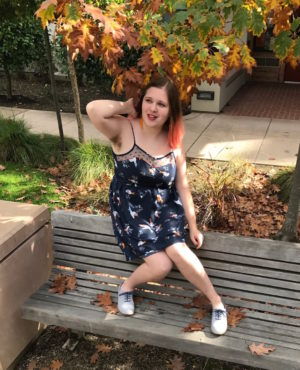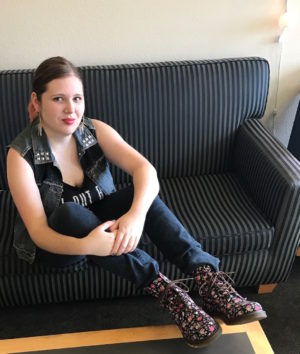How I Maintain Visibility as a Bi Femme
November 15, 2016
Share
DonatePhoto credit: unsplash/Isi Parente
When we see someone dressed or styled a certain way, we might subconsciously draw conclusions about who they are as an individual. We might form ideas about them, their gender, their sexual orientation, their economic status, whether they are liberal or conservative, whether they are religious or non-religious, where they live, and what they do for a living. And while many of us are aware that these judgments may be unreliable or rely on stereotypes, that doesn't necessarily stop us from subconsciously trying to identify and categorize others.
As a bi femme woman, I'm acutely aware of how my appearance and my sexual orientation interact. I came out when I was in high school, and for much of those early years, I still believed that I had to enact my orientation by dressing a certain way. This was, in part, rooted in internalized misogyny— being a queer girl meant being "not like the other girls", and that translated into my appearance.
I was also desperate to be seen and acknowledged (I was lucky enough to live in a place where although being out was not received positively, it also did not put me in any physical danger). Coming out as a bi teen girl meant being met with a lot of skepticism, including the common dismissive phrases like "it's probably a phase" and "everyone your age experiments". I felt that if I dressed the part, maybe I would be believed. Maybe people would understand that I was certain about who I was and that for me, it was a core part of my identity.

For a long time, I refused to wear pink, floral prints, or anything else that might be considered "pretty" or "feminine". My makeup consisted mostly of thick black eyeliner, and I never would've dreamed of putting on pink lipstick or blush. I enjoyed wearing dresses sometimes, but they had to be black and paired with sneakers and a faux leather jacket in order to reassert my perception of what a bi girl looked like. I constructed my image carefully, according to how I thought others would view me.
When I started college, I became a little more adventurous with my wardrobe. I made new friends, many of them LGBTI, and saw the wide array of styles that they flaunted. I finally admitted to myself that I actually love floral prints, especially on dresses. I started wearing shoes other than my high top sneakers. I experimented with makeup. As I learned about things like stereotypes and socialized behavior, I started to realize that I had suppressed my genuine style because I was afraid of what people would think of me.
Now, my look often varies. Some days I'm in cargo pants and a band T-shirt, and some days I'm in a skirt and a flowy top. Some days I wear minimal or no makeup, while other days I put on a full face, with bright purple lipstick. I'm not afraid to wear neon pink nail polish, have pink ombre hair, and show off my body hair. I can appreciate the fluidity of my style because I'm no longer trying to project one singular image.

While I definitely feel more genuine about how I present myself now, I also know that my younger self was right about certain things. I do, for example, feel much more visible as a non-heterosexual person when I'm dressed in a more stereotypically masculine way. When I enter LGBTI spaces, I feel that I'm read more accurately when I'm dressed down rather than dressed up (although in those cases I am probably more often read as a lesbian than as bi). When I'm styled in a more feminine way, I am more often read as a straight person. I also feel that I'm read differently depending on whether or not my armpit hair and leg hair is showing (people tend to assume that non-heterosexual women would be more likely to reject shaving).
As I style myself for the day, I have to take into account the fact that I will probably be categorized based on my look, and that my bisexuality will likely be erased either way. In these situations, when I am inadvertently labeled as a lesbian or a straight woman, I simply have to advocate for myself and correct the mistake (which is not always easy). When styling myself I also have to consider personal safety, as I tend to encounter more street harassment when I am styled more femininely. I imagine that many other bi+ people have similar struggles and that these concerns are heightened for trans and gender-nonconforming folks.

My point in all of this is that while we often think of style as innate, it can actually be learned. It's frustrating to know that we might not have total control over how others view us, and perhaps even more frustrating to discover that we ourselves might have picked up our own biases based on physical appearance. One thing we can do for one another is to try to be aware of the assumptions that we make based on physical appearance. My style can communicate a lot of things about me, but it can't communicate everything— clothing, hair, makeup, and jewelry can't give a complete picture of who I am. I wouldn't want anyone to assume that my appearance represents everything about me, so I won't assume that about others.
One thing we can do for ourselves is to continue exploring our own personal styles. As safety allows, we can reject the constraints around gender and sexual orientation that make us afraid to present in certain ways and instead work towards authenticity. I've been much more confident in myself ever since I began to embrace my unique femme style and realized that being femme doesn't make me any less bi.
Comments
Facebook Comments